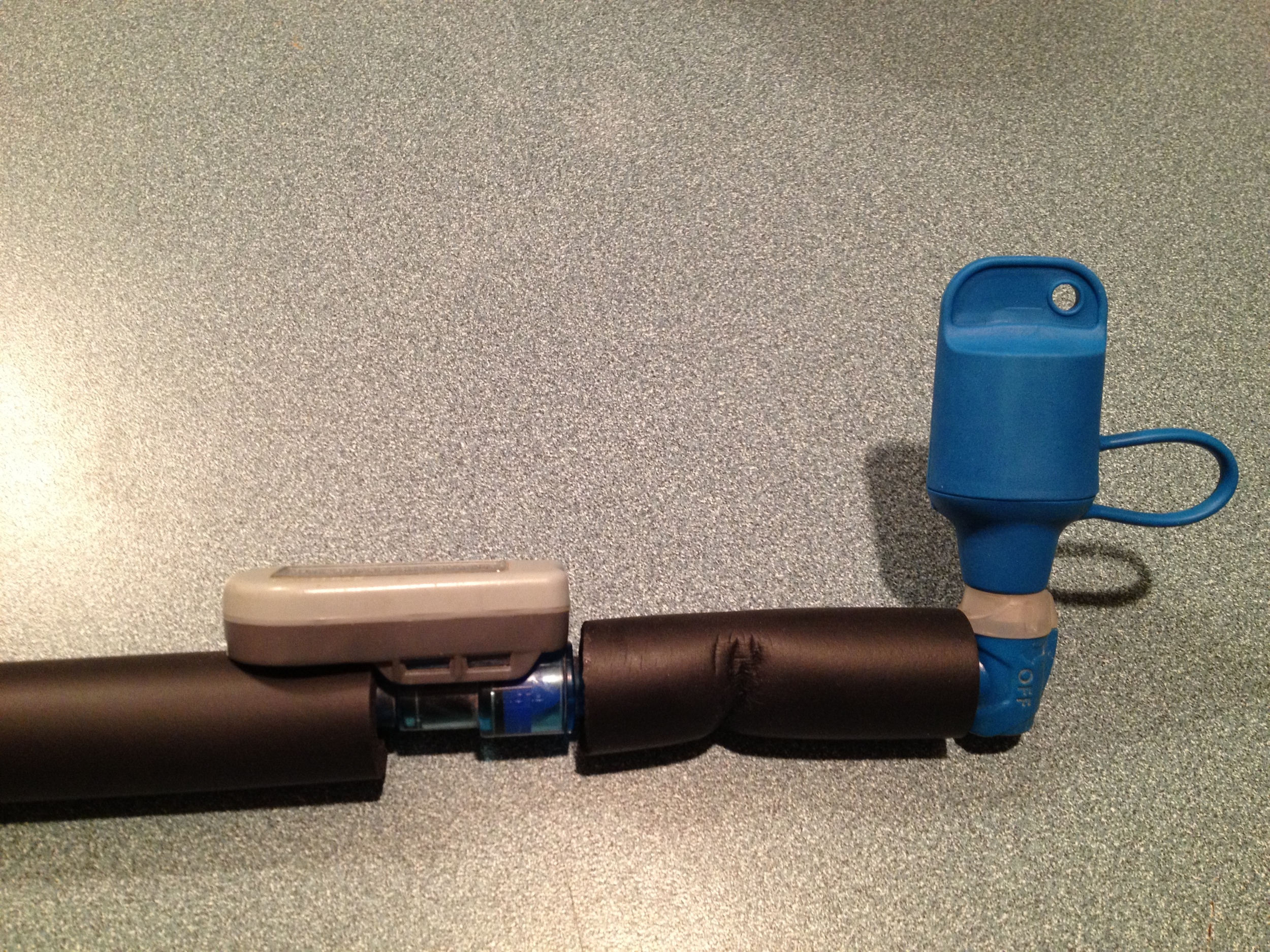Many of my colleagues are working out in this crazy cold weather that much of the company is experiencing. I imagine that most aren’t surveying since it’s tough to do that when you can’t see the ground through the snow. That is, if you’re out west in the high desert. Others are surely digging shovel tests in the snow. I know some of my Canadian readers are!
Either way, nearly everyone is likely trying to drink water from their hydration packs. Whether you use a Camelbak or a Platypus, they both freeze during freezing temperatures. The easiest way to sort of solve your problem is to do the “Blow Back” method. That is, after you get your drink, take a deep breath and blow the water back into the reservoir. It’s unlikely the reservoir will freeze as quickly as the tube so you’re probably safe for the duration of the shift.
I use the blow-back method during the summer months too. Sometimes I like to put ice in my reservoir from the hotel ice machine before the shift starts. Doesn’t do any good, however, if the first bit of water you get—that hot blast from the tube—tastes like nasty, hot, plastic, tube water. So, blow it back. Your next drink will be refreshingly cool.
Alright. Back to winter. There are really only two ways to insulate your tube easily. The least expensive way is to buy tubing from your local hardware store. The problem with that is the tube likely won’t be the right size on the inside and you’ll have to tape around the tube to keep it on since it’s usually split lengthwise.
The other way to insulate is to buy an insulated tube (Camelbak) that uses the click-lock system making changes easy, or, buy a tube insulator and install it (Platypus). Since the Camelbak insulator just replaces your existing tube (with a flow meter and without, here too), and since I have a Platypus, I’ll walk through the installation of the Platypus Tube Insulator.
Cleaning the bite valve with a bent bottle brush.I purchased my tube insulator at REI for $19.95. It comes with a bite valve cover, which I already have, but will use anyway. I highly recommend a bite valve cover for whatever system you use. It’s nice to not get a mouthful of sand when you take a drink.
Before you install the insulator remove the tube from the reservoir. Take off the connector on the reservoir end and remove the bite valve from the other end. If you just pinch the tube near the connector (or bite valve) and gently twist the part, it should come off. Next, dismantle the bite valve and clean it. The bite valve doesn’t get a cleaning very often and this is a good time to do it. On the Platypus system the inner blue part comes right out. You should be able to bend a bottle brush in half and clean inside the soft rubber bite valve. Bending it in half ensures that your won’t puncture the plastic with the wire end of the brush.
Exploded view of bite valve.After cleaning, reassemble the bite valve assembly but don’t forget the new cover! If you put some spit or soapy water on the hard plastic bit your can twist on the soft plastic bite valve. The same goes for reinstalling the tube.
Now slide your tube through the insulation. I had some difficulty getting the insulation to cooperate. It was all bent up in the packaging and had some kinks in it. After some working, though, I got it. I also had to cut my insulation to account for the flow meter I installed several months ago.
Installed tube.After I installed my tube I went snowshoeing at 8800 ft, above Lake Tahoe, in 15-25 degree (F) weather. Initially, I was doing the blow-back method because I figured it couldn’t hurt. However, the little droplets of water that were left froze anyway. So, I started leaving the water in the tube and it never froze again. I noticed that a little blow back was good, though. The bite valve is not insulated and can easily freeze, leaving your free-flowing insulated tube-water untouchable.
I hope whatever you do you stay warm and stay hydrated. It’s tough to remember to drink water when it’s really cold. You don’t feel like you need it. What you may not realize is that you’re still burning calories at a pretty high rate and need to drink water.
Wearing the installed tube. Yes, those are birds on my hat and outstretched hand.Thanks for reading and I’ll see you in the field!




